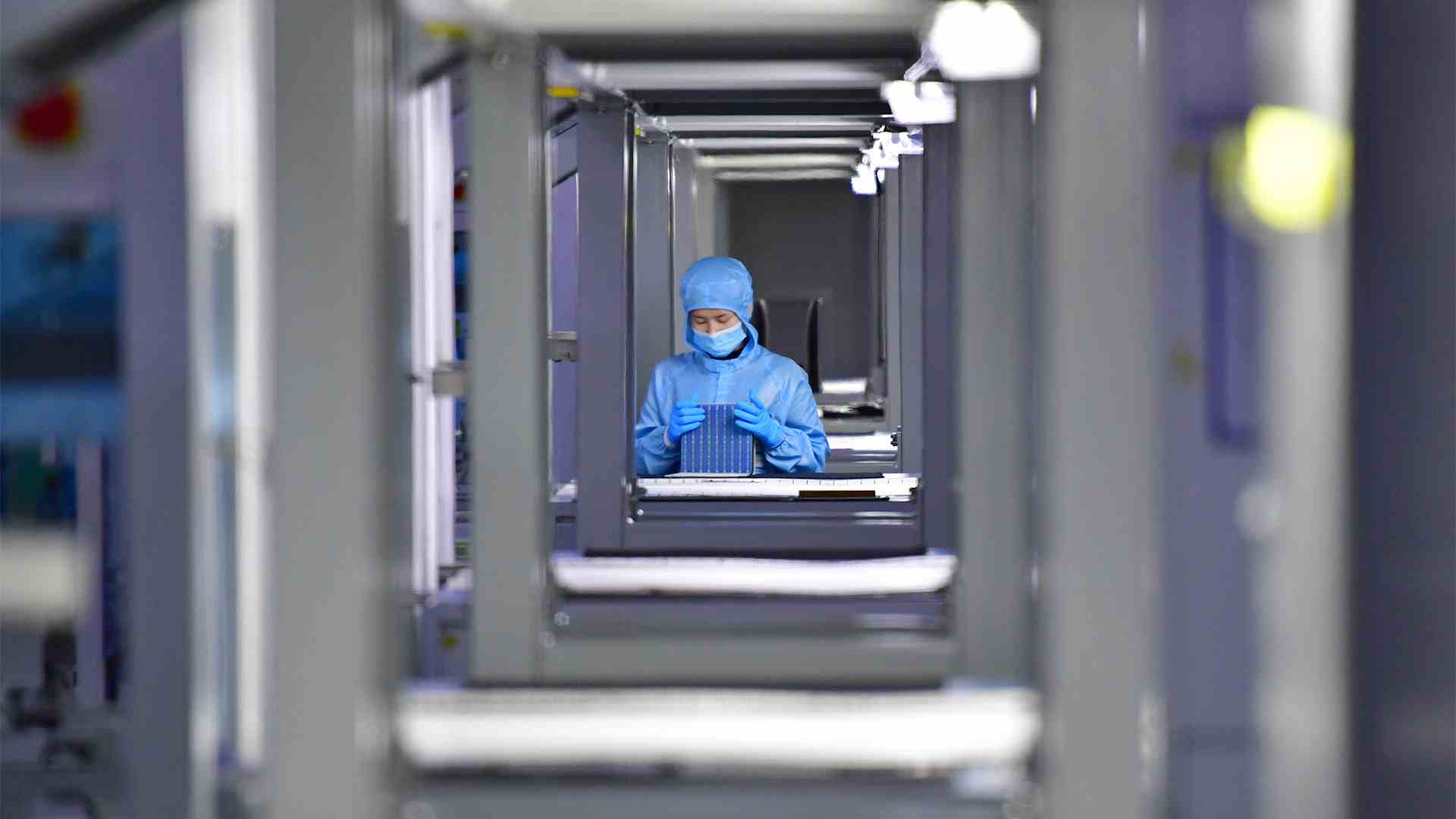Status: 05/16/2022 07:55 a.m
Germany wants to do without oil and gas from Russia – also with a faster expansion of wind power and solar power. This increases the influence of Chinese manufacturers. At what price?
Out of oil and gas, out of dependence on Russia: Since the beginning of the war in Ukraine, renewable energies are supposed to be expanded even faster. But China is the world market leader for both technologies. Is Germany stumbling from one dependency to the next?
Example solar power: By 2030, cells with a total output of 200 gigawatts are to be installed in Germany. For this, 140 gigawatts of solar cells would have to be on the roofs in eight years – almost 17 gigawatts per year. Last year it was exactly 5.46 gigawatts. So it needs to be tripled.
Renewable energies – are we dependent on China?
Michael Houben, MDR, Plusminus, May 11, 2022
Solar power would be unthinkable without China
Solar modules with a total output of 2.8 gigawatts are currently being manufactured in Germany. The rest – almost half – comes from Asia, mainly China. But: Many German manufacturers, such as Solarwatt in Dresden, only assemble the modules, the solar cells for which come from China. While Germany was 55 percent dependent on Russia for natural gas before the Ukraine war, it is 95 percent dependent on China for solar cells.
The expert Volker Quaschning from the University of Applied Sciences considers this to be extremely risky: “We have seen how quickly the geopolitical situation can change. Who can guarantee us whether we will still get along well with China in five years? And if so If we can no longer get solar cells from there, the energy transition has died for us.”
Home made risk
The risk is homegrown. Ten years ago, Germany was the world market leader – from the silicon block through the cells to the module. Then China discovered this future market and began to subsidize producers. At the same time, the feed-in tariff in Germany was drastically cut. While demand collapsed in Germany, China occupied the market. German manufacturers such as Solarworld went bankrupt in rows. At that time, 100,000 jobs were cut within four years. For comparison: the phase-out of lignite involves fewer than 20,000 jobs. In the case of solar energy, five times the number of jobs were quietly processed.
But now that politicians have decided to expand renewable energy quickly, could production in Germany be increased again? Set up new, own production facilities? Solarwatt’s managing director, Dieter Neuhaus, thinks it’s almost too late for that now. Extremely high investments are required for this – and investors would only provide money if they assume that the general conditions will remain stable over a long period of time. And because of the experiences of the last few years, one is a “burned child” in Germany.
Wind power production increasingly outside of Germany
It’s similar with wind power: Here, too, more than 60,000 jobs have been lost since a peak in 2016 – from 163,000 in 2016 to around 100,000 today. The number of newly erected wind turbines has been shrinking for years.
German and European providers are still the market leaders in Germany, but globally they too have long since been overtaken by China. In April – a few weeks after the Russian invasion of Ukraine – the Danish manufacturer Vestas closed its German factory for wind turbine rotors. At the same time, the German competitor Nordex announced that it would also shut down its production in Rostock. The transport of such rotor blades, up to 80 meters long, is extremely complex. Despite this, Nordex only has one European production plant in Spain, as well as others in Mexico and India. Enercon, the largest German supplier, had closed its production facilities in Aurich and Magdeburg in recent years, but still produces in Turkey and Portugal – but above all in Asia and South America.
problem of labor shortages
Whether it will be possible to produce more of these technologies in our own country in the future and to become independent of risky supply chains is also a question of the workforce. According to industry experts, around 50,000 additional workers would be needed just to meet the current expansion targets for photovoltaics alone. But they are not in sight. For example, ten years ago the Regenerative Energy Systems course at the University of Applied Sciences in Berlin was fully booked. Today, around a third of the university places are vacant, although saving the climate is very popular with young people in particular.
Expert Quaschning also sees this as a consequence of wrong politics: The hustle and bustle of the past few years, constant reports of plant closures and bankruptcies, discourages young people from entering such industries. Politicians would have to ensure that an expansion is not only decided at the moment, but is sustained in the long term.
The ARD business magazine plusminus reported on this topic on May 11th. at 9:45 p.m.

